- Message from the President
- Membership Renewal
- Election Results
- Farewell
- New Members
- Member News
- Member Spotlight!
- Event Report
- 2014 Student Award Information
- Upcoming Events
- Cryobiology Journal
Do you have any news, reviews, articles, vacancies or training opportunities to share in the March newsletter?
If so please email them to the editorial team at [email protected]
2013 Officers
President
John H. Crowe
President-Elect
Erik J. Woods
Past-President
Barry J. Fuller
Secretary
Yuksel Agca
Treasurer
Gloria D. Elliot
2013 Board of Governors
Serean Adams
Jason Acker
James D. Benson
Adam Higgins
Eric James
Jens O. M. Karlsson
Barbara M. Reed
Andreas Sputtek
Tiantian Zhang
|
Message from the President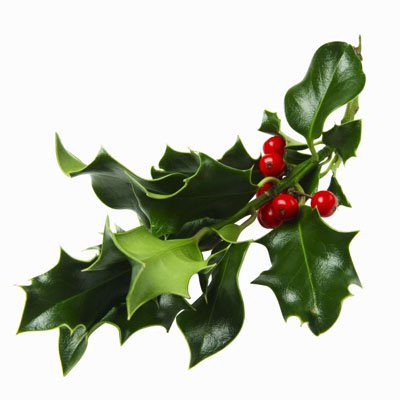
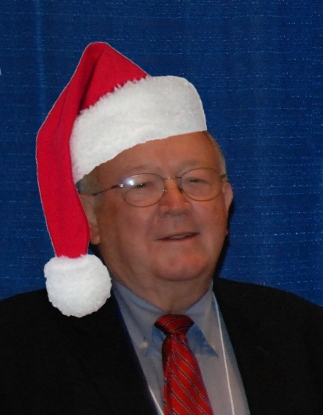
I’ve enjoyed my time as president, but it’s time for me to move on and for Erik Woods to take office. I’m sure the Society is in for smooth sailing, with Erik at the helm.
Here are a couple of parting thoughts. When I stood for election as president four years ago I said that if the Society is going to prosper I thought we had to reach out to other societies, particularly those that are involved in cryobiology-like activities, some of whom didn’t even know it, and to encourage cross membership with our own enterprise. We’ve managed to do quite a bit of this, with no fewer than four joint meetings in the years I’ve been president. I take little credit for that, other than encouraging us to move in that direction; the Program Committee has been superb at making it happen. With Erik as our new President and Jason Acker as President-Elect, I’m confident we’ll keep moving in this direction.
I also pointed out when I was running for office that we must achieve some financial stability. I am happy to report that we are in excellent shape in this regard, due to the outstanding work of Gloria Elliott as Treasurer and Arthur Rowe as Chair of the Finance Committee.
So… I leave office feeling good about where we are headed. So long, good luck, and Happy Holidays!
John Crowe
2014 Membership Renewal
Membership renewal is available now for the 2014 calendar year. As in previous years if you renew by January 15, 2014 you will receive a $20 discount on your membership dues.
The easiest way to renew is via Paypal, but if you would prefer to pay your annual dues by check or bank/wire transfer you can do this by filling in the renewal form, available on the membership renewal page.

2013 Society Election Results
In case you missed earlier announcements, the results of our election are out and the winners will take up their posts from January 1, 2014.
Congratulations to Jason Acker (President-Elect), Yuksel Agca (re-elected as Secretary) and Adam Higgins (Treasurer).
James Benson and Jens Karlsson have been re-elected as Governors, while Gloria Elliot moves from Treasurer into the role of Governor. Cryobiology associate editor John Armitage makes a welcome return to the Board of Governors having previously served as both Governor and Secretary.
You may have noticed that we have appointed an extra governor as Adam's move to Treasurer left his current Governor post vacant. As per previous election precedent we have appointed the next highest ranking governor candidate to fill the vacancy this created.
Finally, our current President, John. H. Crowe, will be moving into the role of Past-President.
Farewell
As we welcome new faces to the Board of Governors we must bid farewell to others. This year we say goodbye to our Past-President, Barry J. Fuller, who has been a member of the Board for the past six years, metamorphosing through the roles of President-Elect, President, and Past-President.
Barry has combined his lengthy term on the Board with his role as Professor in Surgical Sciences at University College London where his research interests include stem cells and regenerative medicine.
We thank him sincerely for his hard-work and dedication to the Society.
New Members
Since the last newsletter we welcome the following new members: 
- Mr. Kamran Makarian (USA)
- Miss. Fatemeh Jalali (USA)
- Dr. Omer Varisli (Turkey)
- Dr. Andrew Picken (UK)
- Dr. Atsuko Kobayashi (Japan)
Member News
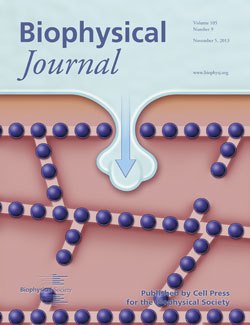 Jens Karlsson and Adam Higgins, both members of the Society for Cryobiology's Board of Governors appeared in a number of mainstream websites last month due to their research on ice formation in relation to cryopreservation of tissues and organs. Their paper "Effects of Intercellular Junction Protein Expression on Intracellular Ice Formation in Mouse Insulinoma Cells", published in the November 2013 issue of Biophysical Journal and also featuring on the front cover of the issue (pictured left), attracted interest from media around the world, and was picked up by almost a dozen websites including Fox News, The Scientist, and Science Daily, to name just a few. Jens Karlsson and Adam Higgins, both members of the Society for Cryobiology's Board of Governors appeared in a number of mainstream websites last month due to their research on ice formation in relation to cryopreservation of tissues and organs. Their paper "Effects of Intercellular Junction Protein Expression on Intracellular Ice Formation in Mouse Insulinoma Cells", published in the November 2013 issue of Biophysical Journal and also featuring on the front cover of the issue (pictured left), attracted interest from media around the world, and was picked up by almost a dozen websites including Fox News, The Scientist, and Science Daily, to name just a few.
The interest in the research also led to many other members of the society being interviewed for comment, including John Bischof and Peter Mazur who both commented for The Scientist, and Gary Bryant who was interviewed by ABC News 24 in Australia.
The following summary is taken from the Phys.org article.
Dr. Karlsson and his team monitored microscopic freezing events inside genetically modified cells and used mathematical models to show that gap junctions do not always provide the major pathway for the spreading of ice crystals between cells. They saw that cell-to-cell propagation of ice also occurred during freezing of tissue samples in which gap junction formation had been suppressed. The authors discovered that intercellular connections -- in which neighboring cell membranes are stitched together by rows of rivet-like structures known as tight junctions -- also play a significant role.
"By using high-speed video imaging, we found evidence that ice from outside the cells sometimes forms nanoscale branches, which can penetrate the barriers created by tight junction seams," says Dr. Karlsson. "The resulting invasion of the spaces between cells appears to promote crystallization of the cells adjacent to the breach."
The unexpected findings may provide a boon for the manufacturing of engineered tissue products that can be used for grafts and organ transplantations. "Using cryopreservation to stop living tissue constructs from spoiling during storage will be the key to enabling economical mass production, quality assurance, and shipping logistics for these life-saving products," says Dr. Karlsson.
Member Spotlight!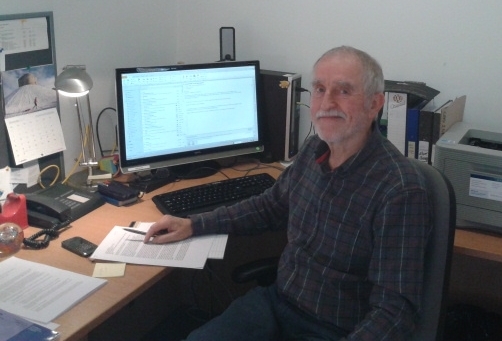
Welcome to our second Member Spotlight!
This month we'll be getting to know Cryobiology’s Editor-in-Chief, Prof. David Rawson (pictured right). David took over the role from previous editor Prof. David Pegg almost three years ago and the journal has continued to flourish under his leadership. I had been quietly wondering if the name ‘David’ was the primary requirement for the job, but as you’ll see from the interview below David clearly has a wealth of experience which stands him in good stead for the role of editor.
Can you tell us a little about your background and how you came to be interested in cryobiology?
I graduated in Biological Sciences and my main interests were the lower orders of eukaryotes and prokaryotes. When I started lecturing it was mostly in cell biology and cytogenetics. I rather ‘backed into’ the field of cryobiology in the early-1990s, when I became interested in interrogating cells to detect metabolic responses due to changes in their physico-chemical environment. My team was developing cell-based biosensors for use in toxicity assessment and pollution monitoring. We were using prokaryotic biocatalysts incorporated onto screen printed electrodes, but became increasingly interested in exploiting eukaryotic cells for these assessments. This led us to consider what eukaryotic biocatalsys we could incorporate into our biosensors. One of the challenges to using such cells was how to ensure a long shelf-life for the biosensors. Unlike prokaryotic cells, which could be freeze-dried in situ, we had to consider a different approach – cryobanking. This is when I first became aware of the benefits and challenges of cryopreservation.
One target biocatalyst was the fish embryo, which was becoming a interesting model in classical toxicity bioassays. To cut a long story short, cryopreserving fish embryos and oocytes became an important second research theme alongside the biosensor research. The difficulties of cryopreserving fish embryos and oocytes are many and varied, and research continues into this area even today. My first PhD student in the area of cryobiology was Dr. Tiantian Zhang, who is now a respected academic and cryobiologist still working in the field of fish cryobiology.
When did you first become involved with the Society for Cryobiology?
Once I started to publish regularly in the field of cryobiology I became more and more involved with the society and started to attend their annual meetings. I was invited to join the editorial board in the mid 2000’s, and remained a member until I took over as editor approximately three years ago.
How did this involvement lead into being offered the role of editor?
When David Pegg announced that he was retiring as editor, I had no intention of applying for the role at all. However, a few people asked me if I was thinking of applying and after a bit of pondering the idea began to grow on me. The Board of Governors set up an appointment panel to consider the applicants, and I was lucky enough to be offered the position. I’ve not regretted ‘throwing my hat into the ring’.
What do you most enjoy about editing Cryobiology?
There are several aspects of the role that I enjoy. The first is keeping up to date with the latest advances in the field, and having the opportunity to read exciting new research.
I have also particularly enjoyed the close involvement with members of the Society for Cryobiology, and getting to know the established cryobiologists on a personal as well as professional level has been both interesting and gratifying.
More recently the role of the editorial office has been greatly expanded, with my assistant, Nicole Evans, taking over all aspects of membership administration, as well as a host of other duties from Portland Customer Services. This has led to a real sense of working for the Society as a whole, rather than just focussing on the journal.
Are there any aspects of the role that you find challenging?
The key question an editor has to ask, whether it is as editor of the national newspaper or a scientific journal, is ‘how do I know this is true?’. The way that we address this for the journal is through the reviewers’ scrutiny of each submitted manuscript. I take the reviewing process very seriously and regard our reviewers very highly. The meticulously and thorough feedback they provide is absolutely vital for my decision making, but the reviews are equally important for the authors who receive comments from their peers. I really cannot thank our editorial board and reviewers highly enough. They selflessly donate their time to us over and over again, in order to maintain the highest scientific standards for the journal.
Finally I must say that I simply couldn’t keep up with the deluge of manuscripts that the journal receives without the help of the editorial board and especially my associate editors, John Armitage and Seizo Fujikawa.
Finally, do you have any tips for young researchers who are only starting to publish their work?
One important thing to bear in mind is that most reviews are trying to suggest improvements to your paper, so don’t be discouraged by reviewers’ comments. As long as your manuscript is not rejected outright publication is achievable as long as you can appropriately address the reviewers’ comments. It may be useful for you to discuss the comments with your senior colleagues and mentors, and there may be occasions when you may want to challenge a point that a reviewer has raised. Don’t be afraid to do this - as long as you can provide evidence to back up your argument!
It is not uncommon for some manuscripts to undergo several iterations. As long as the science is sound we are happy to work through several versions of your manuscript with you to ensure that your final published work is of the highest quality.
CRYO2014 - Student Awards Information
Call for Applications for travel award, John K. Critser Student Travel Award, and Peter L. Steponkus Crystal awards, and information on the poster competition
All Awards are restricted to current student members of the society for Cryobiology. To Join the Society for Cryobiology, please apply on the Society for Cryobiology website.
Student Travel Awards: Students planning on attending this year's annual meeting in Savannah, Georgia, USA may have noticed that their registration fees have been waived. Because of this, usual travel awards have been reserved to reduce travel costs only for international students. Note that a student may not apply for the travel award more than twice.
John K. Critser Student Travel Award: The awards committee is accepting applications for the Critser Travel Award, to be awarded in the amount of $1500, from both US and International students.
Crystal Award Competition: Students wishing to compete in the Crystal award student oral presentation competition are asked to complete the application form and submit an extended abstract. All applications will be reviewed by a panel and the top four student applications will be invited to present in the Peter L. Steponkus Crystal Award Session. The top presentation will be awarded a plaque and an honorarium of $1000.
To enter the three awards listed above students are asked to submit an application form and extended abstract (with form and template available on the student award page of the conference website to [email protected] no later than January 31, 2014.
Student Poster Competition: Different from previous years, the Society for Cryobiology awards committee will be accepting entries in the best student poster competition up to the day of the poster session. The best student poster will be awarded $500. Application forms do not need to be submitted in advance.
Note: All students who will receive honorariums from the Society for Cryobiology will be asked to complete an information form for U.S. Tax purposes. Details will be provided upon notification of award.
Questions for clarification regarding these competitions can be addressed to the Chair of the Society for Cryobiology Awards Committee James Benson.
Event Report
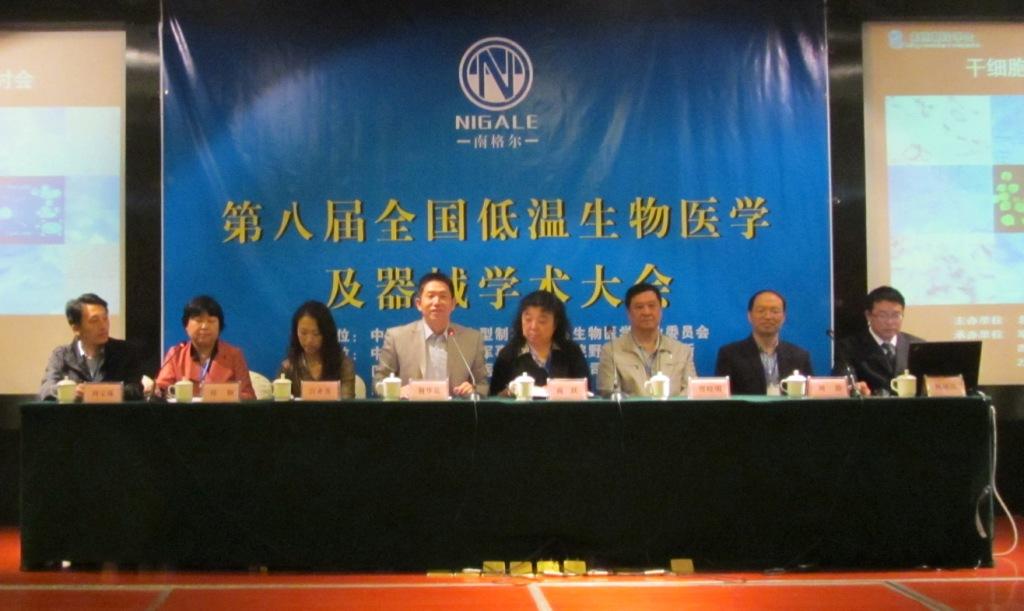
The 8th National Congress on Cryobiology and Instrument Technology
27 - 29 Sep 2013, Chengdu, China
The 8th National Congress on Cryobiology and Instrument Technology (Sept. 27 - 29, 2013) was held in Chengdu, Sichuan, China. It was organized jointly by the Institute of Blood Transfusion, the Academy of Military Medicine (Beijing) and Nigale Biomedical Corporation (Chengdu, Sichuan Province), under the auspices of the Committee of Low Temperature Medicine and Instruments, the Chinese Association of Refrigeration. More than 40 physicians, engineers and scientists from different regions of the country attended the Congress.
The organizers of the Congress invited 10 plenary speakers who reviewed recent advances in fundamental cryobiology, freeze-drying, cryosurgery, preservation of platelets, red cells and stem cells, cold chain management, as well as the development of various low temperature instruments. The Congress accepted 21 research papers, which were edited and published as the Proceedings. The topics of research works presented range from basic research of cryobiology, bio-banking, the development of novel instrument technologies, and to the establishment of cold-chain infrastructure and smart management systems. Attendees noted that China has much to catch up with many developed countries in Europe and North America, and identified the need to enhance collaboration and scientific exchange with the international community as a priority.
Thanks to Wendell Sun for this report.
Upcoming Events

American College of Cryosurgery
January 15-19 2014, Key Largo, Florida
The American College of Cryosurgery will be holding its annual conference in Key Largo, Florida in January 2014. The conference will include participation from the Society for Cryobiology (co-sponsors), the Cryogenic Society of America and the Society for Thermal Medicine.
The deadline for early registration and abstract submission is October 15, 2013.
For more information please visit http://www.cryoconference.com
Cryogenics 2014
April 7-11, 2014, Prague, Czech Republic
The International Institute of Refrigeration's bi-annual conference will be held at the Congress Centre, in Prague in early April 2014. The programme will include cryophysics, cryoengineering, liquefaction and separation of gases, cryobiology and cryomedicine.
For further information please visit http://www.cryogenics2013.cz

ISBER 2014
May 20-24 2014, Walt Disney World, Orlando, FL, USA
ISBER are holding their 2014 annual meeting at the Walt Disney World Swan and Dolphin Hotels in Orlando, FL from May 20 - 24. ISBER will also be holding a number of pre-conference workshops
in various aspects of biobanking.
Abstract Submission Deadline: January 14, 2014
For full information information please visit http://www.isber2014.org

SFC/SIVB 2014 World Forum on Biology
May 31 - June 4 2014, Savannah, GA, USA
As you already know, the Society's own 2014 annual meeting is a joint meeting with the Society of In Vitro Biology, and this will be taking place in Savannah, Georgia from May 31 - June 4. Initial information on the the planned symposia is available on the conference website, and registration is now open.
Important Dates
Final Abstract Submission: March 31, 2014
For the latest information please see http://www.sivb.org/meetings/
Cryobiology Journal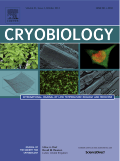
Volume 67, Issue 3, Pages 251 - 452 (December 2013)
Articles
- Improved cryopreservation protocol for Blanca-Celtibérica buck semen collected by electroejaculation
Pilar Jiménez-Rabadán, Manuel Ramón, Olga García-Álvarez, Alejandro Maroto-Morales, Pablo J. Álvaro-García, Enrique Del Olmo, M. Dolores Pérez-Guzmán, M. Rocio Fernández-Santos, J. Julián Garde, Ana J. Soler
- Cryopreservation of rat MSCs by use of a programmed freezer with magnetic field
Shunichi Kojima, Masato Kaku, Toshitsugu Kawata, Hiromi Sumi, Hanaka Shikata, Tahsin Raquib Abonti, Shotoku Kojima, Tadashi Fujita, Masahide Motokawa, Kazuo Tanne
- A new cryomacroscope device (Type III) for visualization of physical events in cryopreservation with applications to vitrification and synthetic ice modulators
Yoed Rabin, Michael J. Taylor, Justin S.G. Feig, Simona Baicu, Zhen Chen
- Comparative cryopreservation study of trochophore larvae from two species of bivalves: Pacific oyster (Crassostrea gigas) and Blue mussel (Mytilus galloprovincialis)
E. Paredes, J. Bellas, S.L. Adams
- Stainless steel tube-based cell cryopreservation containers
Wei-Hung Shih, Zong-Yan Yu, Wei-Te Wu
- Comparison of cytoskeletal integrity, fertilization and developmental competence of oocytes vitrified before or after in vitro maturation in a porcine model
István Egerszegi, Tamás Somfai, Michiko Nakai, Fuminori Tanihara, Junko Noguchi, Hiroyuki Kaneko, Takashi Nagai, József Rátky, Kazuhiro Kikuchi
- The effects of preservation procedures on antibacterial property of amniotic membrane
Fatemeh A. Tehrani, Abolhassan Ahmadiani, Hassan Niknejad
- Season of ejaculate collection influences the freezability of boar spermatozoa
Isabel Barranco, Maria D. Ortega, Maria J. Martinez-Alborcia, Juan M. Vazquez, Emilio A. Martinez, Jordi Roca
- Amphipathic polymer-mediated uptake of trehalose for dimethyl sulfoxide-free human cell cryopreservation
Duncan M.C. Sharp, Andrew Picken, Timothy J. Morris, Christopher J. Hewitt, Karen Coopman, Nigel K.H. Slater
- Is axenicity crucial to cryopreserve microalgae?
Raquel Amaral, Jorge C. Pereira, Alberto A.C.C. Pais, Lília M.A. Santos
- Rabbit morula vitrification reduces early foetal growth and increases losses throughout gestation
J.S. Vicente, M.D. Saenz-de-Juano, E. Jiménez-Trigos, M.P. Viudes-de-Castro, D.S. Peñaranda, F. Marco-Jiménez
- A faster reconstitution of hematopoiesis after autologous transplantation of hematopoietic cells cryopreserved in 7.5% dimethyl sulfoxide if compared to 10% dimethyl sulfoxide containing medium
Iwona Mitrus, Andrzej Smagur, Sebastian Giebel, Joanna Gliwinska, Magdalena Prokop, Magdalena Glowala-Kosinska, Agata Chwieduk, Maria Sadus-Wojciechowska, Andrzej Tukiendorf, Jerzy Holowiecki
- A model for predicting the permeation of dimethyl sulfoxide into articular cartilage, and its application to the liquidus-tracking method
Xiaoyi Yu, Guangming Chen, Shaozhi Zhang
- Brown bear sperm double freezing: Effect of elapsed time and use of PureSperm® gradient between freeze–thaw cycles
Manuel Alvarez-Rodríguez, Mercedes Alvarez, Elena López-Urueña, Carmen Martínez-Rodriguez, Santiago Borragan, Luis Anel-López, Paulino de Paz, Luis Anel
- A study on the vitrification of stage III zebrafish (Danio rerio) ovarian follicles
Leandro Cesar Godoy, Danilo P. Streit Jr., Tiziana Zampolla, Adriana Bos-Mikich, Tiantian Zhang
- Cryopreservation of an artificial human oral mucosa stroma. A viability and rheological study
Mario A. Rodriguez, Modesto T. López-López, Juan D.G. Durán, Miguel Alaminos, Antonio Campos, Ismael A. Rodriguez
- Percutaneous comprehensive cryoablation for metastatic esophageal cancer after failure of radical surgery
Jiongyuan Xu, Lizhi Niu, Feng Mu, Shupeng Liu, Yin Leng, Mengtian Liao, Jianying Zeng, Fei Yao, Jibing Chen, Jialiang Li, Kecheng Xu
- Alleviating the pain of unresectable hepatic tumors by percutaneous cryoablation: Experience in 73 patients
Xin’an Long, Jianying Zeng, Lizhi Niu, Fei Yao, Xiaohua Wang, Jibing Chen, Jialiang Li, Kecheng Xu
- Cryopreservation of zebrafish (Danio rerio) primordial germ cells by vitrification of yolk-intact and yolk-depleted embryos using various cryoprotectant solutions
Shogo Higaki, Yutaka Kawakami, Yoshiki Eto, Etsuro Yamaha, Masashi Nagano, Seiji Katagiri, Tatsuyuki Takada, Yoshiyuki Takahashi
Brief Communications
- Linking membrane physical properties and low temperature tolerance in arthropods
Dorthe Waagner, Hélène Bouvrais, John H. Ipsen, Martin Holmstrup
- The survival of mouse oocytes shows little or no correlation with the vitrification or freezing of the external medium, but the ability of the medium to vitrify is affected by its solute concentration and by the cooling rate
Estefania Paredes, Peter Mazur
- Evaluation of the Cryotech Vitrification Kit for bovine embryos
C. Gutnisky, G.M. Alvarez, P.D. Cetica, G.C. Dalvit
- Supplementation of sperm cryopreservation media with cell permeable superoxide dismutase mimetic agent (MnTE) improves goat blastocyst formation
Mohsen Forouzanfar, Abdolah Abid, Sayyed Morteza Hosseini, Mehdi Hajian, Mohammad Hossein Nasr Esfahani
Abstracts
- Publication of abstracts from CRYO2013, the fiftieth annual meeting of the Society for Cryobiology, held in Washington, DC, June 28-31 2013.
|